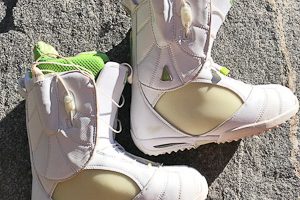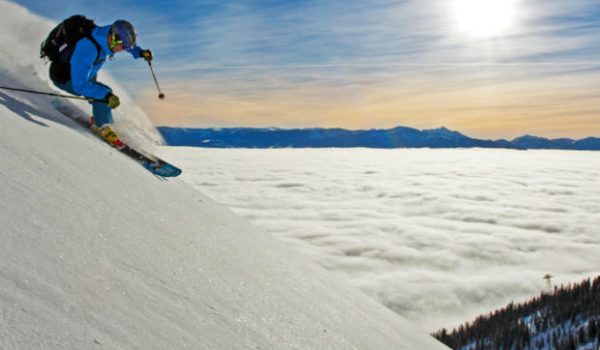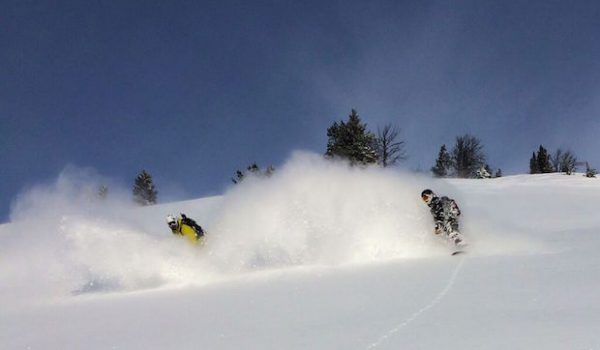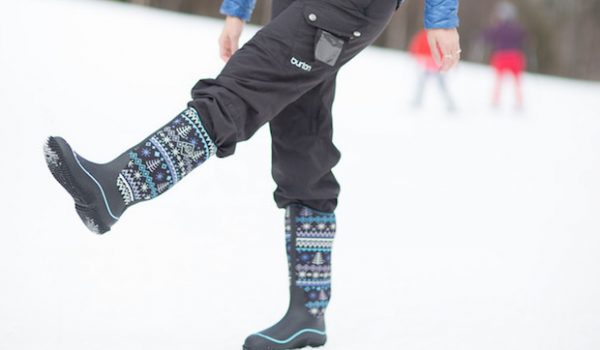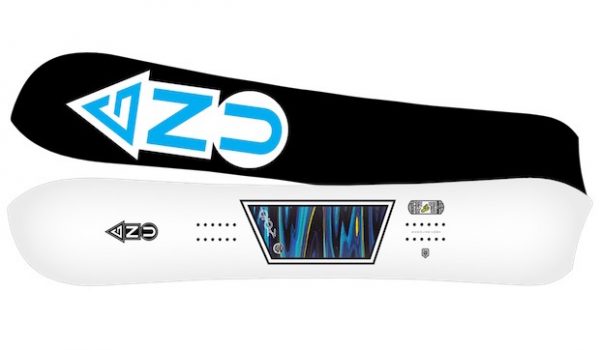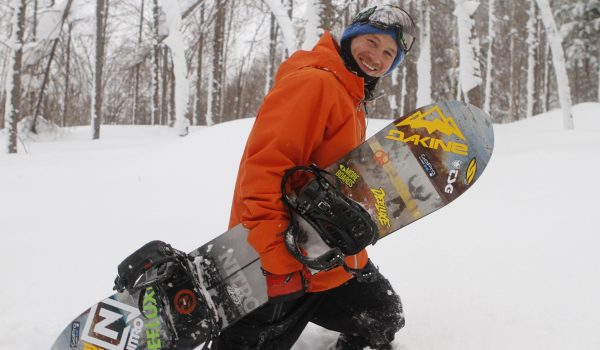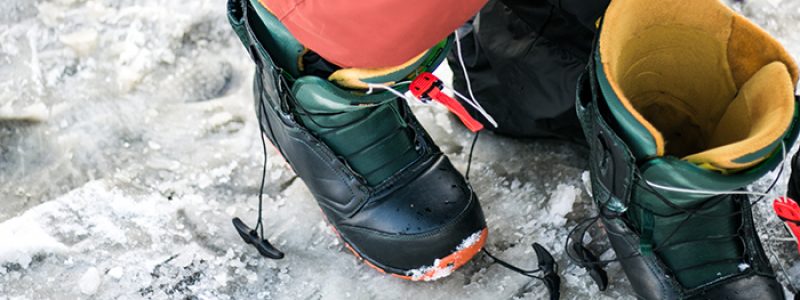
The Best Snowboard Boots
Our team of expert snowboard boot reviewers performs extensive field tests on the snow at mountain resorts around the country using an objective scoring system to determine the best snowboard boots for men and women.
We divided our snowboard boot reviews into two categories: men’s and women’s snowboard boots. Scores and reviews are based on how the boots fit, comfort, responsiveness, weight, durability, versatility and traction. A wide variety of snowboard boots were tested, including high performance boots, which are designed for advanced riders and typically cost more money, and introductory level boots, which are often more affordable and ideal for beginner and intermediate riders. The men and women’s snowboard boots that made the cut to be included in the test groups offer the best combination of comfort and performance.
How to Select the Best Snowboard Boots for You
The Best Snowboard Boots by: Monica Prelle
Snowboard boots are one of the most important pieces of equipment for snowboarding, and perhaps the most difficult to buy. Because of the comfort factor, the fit of your boots can be the difference between having fun and riding well, and having an uncomfortable and possibly miserable day of snowboarding. Selecting the best pair of snowboard boots can be challenging and it is important to take your time to find the right pair. Whether you are a beginner getting ready to make your first purchase or an advanced rider looking to dial in your equipment, there are a few key elements to keep in mind when buying snowboard boots.
1. Determine Your Riding Style
Like anything else in snowboarding, ability level and riding style determine the kind of snowboard equipment to purchase. However, snowboard boot fit and riding styles are key elements in selecting boots, so keep in mind that personal preference is the most important factor in selecting a boot.
Beginner and Novice Snowboarders
If you are just learning how to snowboard, or a novice rider who only hits the slopes a few times per year, comfort is probably the most important factor when purchasing your own pair of boots. If you don’t ride often you may not want to invest in an expensive pair, so limit extra features –which will likely increase the price – to those that will add to your comfort. Boots with a softer flex will be the most forgiving and allow you to keep riding as long as your legs are willing. Also, keep in mind a simple, yet efficient quick lacing system to make the boots easier and to put on and off.
Intermediate and Dedicated Snowboarders
The intermediate snowboarders who notch up more than a few days each season might want a comfortable boot with a few more features than a novice. With each design enhancement, the price of the boot will go up, but if you ride enough the comfort will be worth the investment. Look for a boot with medium flex, so that you are comfortable, but still have responsiveness for performance. Also look for a liner that has plenty of cushion and support that will keep you riding all day long.
Freestyle and Terrain Park Snowboarders
Many snowboard boot manufacturers design for specific riding styles, so if you are a freestyle snowboarder who likes to hit jumps and jib rails, pay attention to the specifics of the boot. Freestyle boots will often have an enhanced liner to help with the impact of landings. You will also want to make sure the fit is snug so your foot does not move inside the boot. BOA and quick lacing systems are ideal to dial in the fit of the boot, and make on-hill adjustments easy if necessary.
All-mountain and Freeride Snowboarders
If riding high-speed groomers and extreme lines off trail is your jam, you will most likely want a moderately stiff and more responsive boot. All-mountain and freeride boots, like freestyle boots, will have high tech and enhanced liners to help with impact and maintain comfort in variable terrain.
2. Comfort and Fit
Comfort
How comfortable, or not, your snowboard boots are will be the most important factor in your overall enjoyment snowboarding, which ultimately will affect your entire day riding. Unfortunately there is no one-size-fits all comfort and fit guide since every person has a different foot and cushioning preference, so it’s important to try on a lot of boots to get the right pair. Try on a few different styles and if possible take the boots for a demo day.
Fit
The perfect fit of snowboard boots is a balance between tight and still comfortable. You want the boots to fit snug, so your foot does not move around inside the boot, but you also don’t want your toes to be curled or smashed. Your toes should lightly reach the end of the boot and should be able to wiggle your toes inside the boot. Stand sideways and bend your knees in a snowboard stance. Your heel should stay down, but your toes should also pull back from the end of the boot slightly.
3. Snowboard Boot Flex
Snowboard boots are designed with the rider’s ability and riding style in mind, and the flex of the boot is an important part of the decision making process when purchasing a boot. Typically a beginner or terrain park rider will want a softer flex boot that is more comfortable out of the box and more forgiving. Advanced riders and freeride snowboarders usually want a stiffer boot that is more responsive. The range of flex in snowboard boots varies from to brand to brand and flex descriptions don’t follow an industry standard. Keep in mind that the flex typically softens up after a few weeks or months of wear while stiff boots can take an entire season to break in. Consider that a stiffer boot may have longevity, but might not be what you are looking for immediately and a softer boot may be perfect immediately but might not last as long as your preference.
4. Snowboard Boot Sizing
Your snowboard boot size is generally the same as your shoe boot size, but sizing does vary from brand to brand and sometimes from model to model. Some snowboarders will wear a size smaller, assuming the boot will pack out and fit perfectly, but this can cause a few weeks of painful snowboarding and is not recommended.
Women’s Boots and Sizing
Many female snowboarders may wonder if they need a women’s boot or not. The options are more limited, but more and more brands are designing women’s-specific snowboard boots from beginner to intermediate and advanced options at all price levels. The most important thing to keep in mind when shopping for a snowboard boot is how it fits you. Many women are smaller than their male counterparts and need a boot that will be sized accordingly.
Female boots usually have a lower rise so it hits your calf in the right place and a narrower feel. A small woman who wears a man’s boot, no matter her foot size, might have an awkwardly tall boot that will bruise the calf and her foot could be swimming inside even if the length fits. Taller women might be more comfortable in a men’s boot, but of course, that again depends on personal preference. Sizing, comfort and fit are the most important considerations when selecting a boot, so it is recommended that women start with women’s boots since they are designed to fit the female body. And let’s be real, bright colors and flashy styles can be fun.
5. Choose Your Snowboard Boot Lacing System
Snowboard boots have a few options for lacing systems and personal preference of the laces could be the deciding factor when selecting the best snowboard boots for you. There are different styles, so here we break down the differences for you.
Boa Lacing
The Boa lacing system is quick and easy and allows the rider to dial in just the right amount of tightness. A small knob at the top of the boot cranks on the wire laces with each turn. The Boa system allows you to micro adjust the boot to your desired fit and the pressure is evenly distributed throughout the boot. Some boots have multiple Boa systems with different dials to micro adjust specific foot zones like the forefoot or upper boot. The dials lock out so the boot will stay perfectly tightened with no slipping, and easily release to loosen up the boot to take off. Of course with anything wire or mechanical comes the concern of breaking, but the Boa system is well-regarded among its users.
Quick Pull or Speed Zone Lacing
Traditional laces that have a quicker and more efficient pull and lock out lacing are called different things by different manufacturers, but are basically the same idea. These lacing systems have two zones, one for the lower and one for the upper of the boot so you can dial in the desired tightness for each zone. Laces have an easy handle and pull system that lock out and the handle tucks conveniently inside the boot in a pocket. This system is reliable and is more customizable that traditional laces, but typically less expensive and more simple than the Boa system.
Traditional Lacing
Traditional shoelaces might take more effort to get the desired tightness, but it is a simple and trusted lacing system, and certainly the most affordable.
6. Snowboard Boot Liner
The snowboard boot liner is as important a component as the boot itself since it provides the cushion and insulation. The liner, or inner boot, can be a basic model for affordability and simplicity, or a high-end heat-moldable liner that offers more comfort and impact resistance. While some liners are built into the boot, removable liners are nice to pull out to dry if they get wet from snow or sweat.
Basic Liners
All snowboard boots have an inner liner. The most basic liners provide cushion and will eventually mold to your foot over time from wear. Basic liners are common in entry-level boots. However, basic liners serve a purpose and can be a great start to owning your own pair of boots.
Moldable Liners
One step up from basic snowboard boot liners, but without the custom fit of heat molding, moldable liners mold to your foot using your body heat to mold the liners. A few days of wear and the liner will achieve its most custom fit. These liners are the best option for a relatively custom fit at a reasonable price point.
Custom Heat Moldable Liners
Heat moldable liners offer the best fit in snowboard boots because of the heat molding technology. The premium level boot liners also typically offer extra straps and lacing systems to customize the fit and tightness of the liner. Most specialty snowboard shops will have the heat molding equipment and expert trained staff for the process. Heat molding liners can be found in all different styles of boots and ability levels.
7. Boot Sole
The sole of most snowboard boots are relatively flat so that they fit well in the binding. However, when walking to and from the chairlifts, and sometimes on the slopes, you’ll find that boots with good sticky rubber and a bit of tread will offer superior traction in sometimes slick, icy or snowy conditions. Some high-end boots will use Vibram brand soles for the premium boots, which can be worth the extra money if cost is not prohibitive.
8. Footbeds
All snowboard boot liners come with stock footbeds, however some retailers recommend – and some snowboarders prefer – specialty inserts or custom orthotics. Whether or not you need the upgraded footbeds is personal preference. When shopping for a boot, pull the insert out and look to see if it offers arch support. Some boots have a thin footbed, or higher quality inserts with a plastic arch.
Specialty Inserts
If you want extra arch support in your snowboard boot liner, specialty inserts can be purchased over the counter. Specialty inserts typically offer a stiffer arch, which will help your foot stay in place inside the boot. Look for an insert designed specifically for snowboard or ski boots since the demands of the footwear are different than other athletic shoes. Many brands design winter- specific inserts with heat reflecting materials. Specialty inserts add another cost to the boot, but they can help support the foot to take strain off of the foot muscles and customize the fit of your boot.
Custom Orthotics
Most people do not need custom orthotics, however those with a difficult time finding the right fit for a snowboard boot, a history of injury, or biomechanical issues should consult a doctor or boot fitting expert. If purchasing a boot with a heat moldable liner, be sure to mold the liners with the orthotics for the best fit.
9. Snowboard Socks
Now that you have selected the best boot for comfort, fit and performance, the snowboard socks are the final element to your snowboard boot system. There are plenty of styles and options of snowboard socks to accommodate personal preference and weather. The material and cushion design of the sock are perhaps the most important features when selecting the ideal sock. Look for a wool sock, or wool blend that is moisture wicking and will help keep your feet warm and insulated. Socks that are designed specifically for snowboarding are the best since the cushioning is strategically placed to cushion the movements snowboarders make when riding. Try on a few different styles with your boots to find the perfect match.








